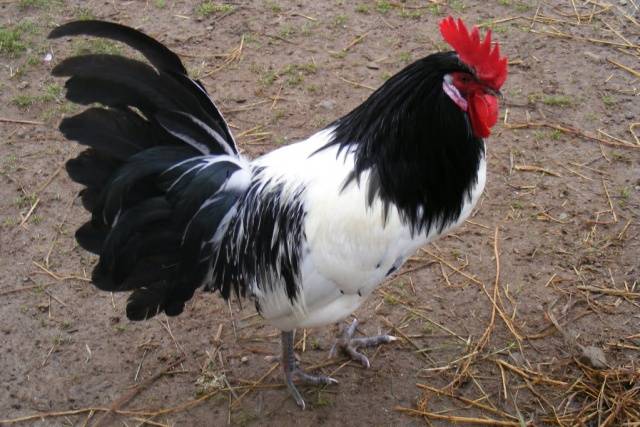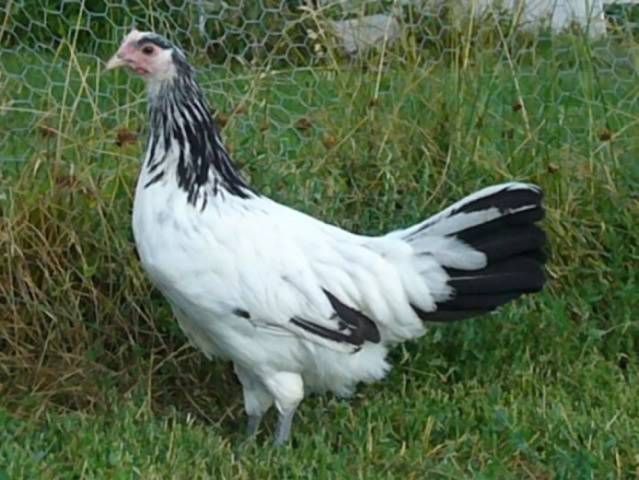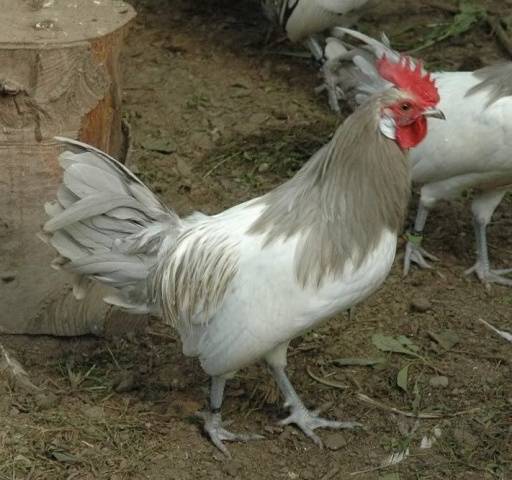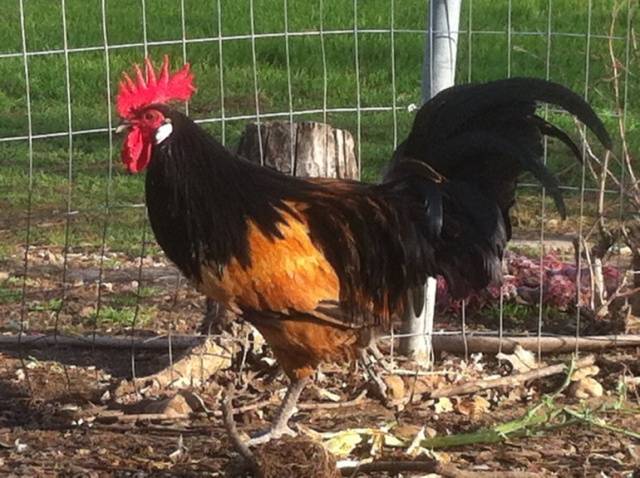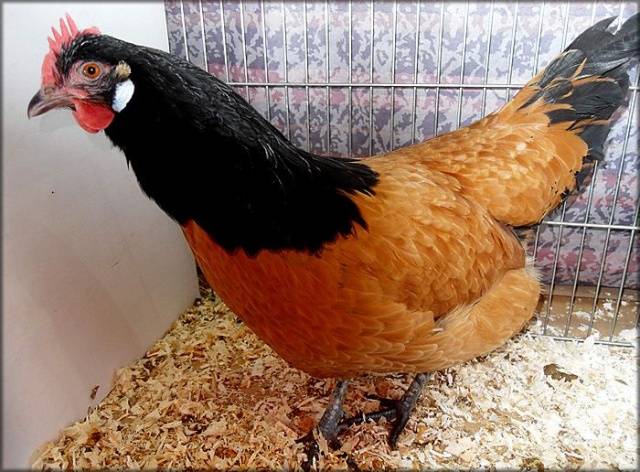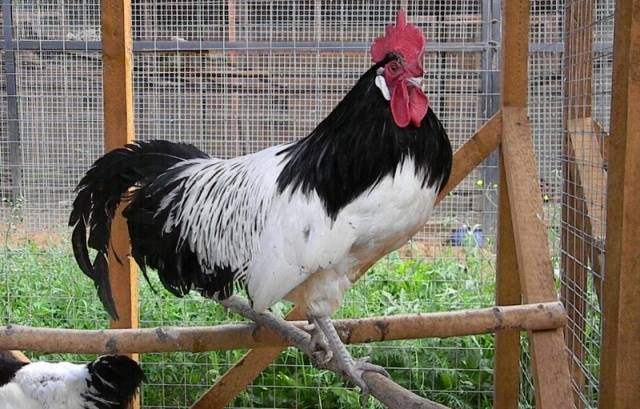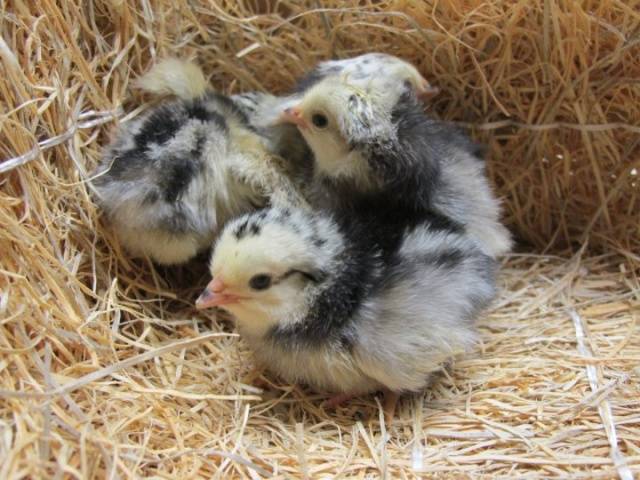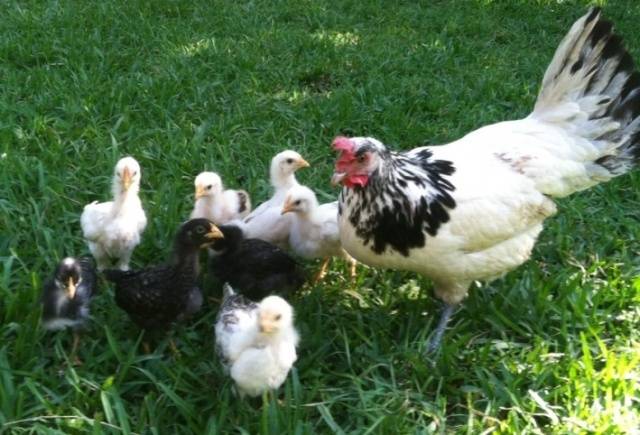Content
A very rare today, almost extinct, breed of chickens was bred on the border of Germany and the Netherlands. Lakenfelder is a breed of chickens of the egg direction. She was once in demand for her productive qualities and unusual appearance. With the emergence of more productive industrial crosses, demand for Lackenfelders from serious industrialists fell, and the number of these beautiful chickens began to decline. Few large farms these days are interested in preserving the breed as genetic material. Since it is difficult for private traders to get purebred chickens, the number of Lakenfelders in private farmsteads is also small.
History of the breed
The first Lakenfelder chickens appeared in 1727. For a long time they were "cooked" in the region of their origin. And only in 1901 the first individuals were brought to Great Britain. The breed standard was adopted only in 1939, and the American Poultry Association.
The name of the breed is translated as "black on a white field", which fully reflects the peculiarity of the color of this chicken.
There is a very interesting description of the origin hens breed Lakenfelder. Legend claims that as early as the II millennium BC, a group of Indo-Aryan sages migrated from India to Mesopotamia, who became known as the "saints from the Brahmaputra river" - the Ah-Brahmans. The migrants brought their first domestic chickens with them. Part of the Ah-Brahmans settled in the Palestinian city of Armageddon, where they continued to breed chickens, evaluating the offspring primarily by the crowing of cocks and the quality of eggs.
In the 1st year of our era, a group of Jews from Tel Megiddo moved to the territory of modern Holland and Germany, bringing chickens with them. These chickens became the ancestors of the Lakenfelders.
Description
Lakenfelders are small egg chickens. In the description of Lakenfelder chickens, it is indicated that by today's standards, their egg productivity is low: 160-190 small eggs per year. The weight of one egg is 50 g. The advantage of Lakenfelder products is an attractive porcelain-white shell.
Laying hens weigh 1.5-1.8 kg, roosters up to 2.3 kg.
The photo shows that the Lakenfelder breed of chickens has pronounced features of layers. The chicken has a small head with a red leaf-like crest. Small red earrings. The lobes are white. In a good rooster, the comb and earrings should be very large. But the comb should not fall to one side. The eyes are dark red. The beak is dark.
The neck is thin and long. The body is tightly knit, elongated. The case is placed horizontally. The back and loin are very long and straight. The top line looks like a ruler.
The wings are long, slightly lowered. The chest is full and protruding. The belly is full, well developed.
The tail is fluffy, set at an angle of 60 °. The rooster's braids are long, curved. The decorative feathers completely cover the tail feathers.
Legs are of medium length. Metatarsus are unfeathered, dark gray in color.
The most common color is black and white. In the United States, it is considered the only valid one. In other countries, other colors are possible, but only three variants are "legalized". The rest are still being worked on. To figure out how representatives of this breed might look, below is a photo of all the colors of Lakenfelder chickens.
"Classic" black and white.
The head and neck are covered with a black feather without any foreign color admixture. The tail should be the same color as the neck. On the loin, black integumentary feathers are interspersed with white ones. In chickens, the loin is white.
Silver.
The most common color in the United States. Closer to Colombian. It differs from the classic by the presence of white feathers on the neck and white feathers covering the black tail feather.
Platinum.
Actually a weakened version of the classic. In another breed, this color would be called lavender. Blue feathers on the neck and tail replace the black ones that are present in the classic color. The pasterns of the platinum Lakenfelder are lighter than those of black and white chickens. The hocks are not dark gray, but as smoky as the feather on the neck and tail.
Golden Lakenfelder
The bird is very beautiful in color, but the name is wrong. In fact, this is the German Forwerk, to which the original Lackenfelder is directly related: one of the progenitors of the breed. But Forverk is a separate breed. Confusion has arisen due to similar color zones.
Have Forverkalike Lackenfelder's, the neck and tail are black, but the body is a beautiful bright red that really looks gold.
Forverk's verbal description, and even photos, are similar to Lakenfelder chickens. Forverkov gives out only the color of the body.
Features of the breed
Chickens have a very lively and cheerful disposition. They are easily tamed, which does not prevent them from creating problems for their owners, since locked up is not for these birds. The Lackenfelders successfully prove to owners that it is not in the owner's best interest to lock poor chickens in a tight space. Birds are excellent foragers and fly out of the enclosure at the first opportunity in search of food in the garden. For their maintenance, you need not only a spacious, but also an enclosure closed from above.
The breed is able to withstand cold weather. Even very small chicks cope well with temperature changes in a brooder. They do well in conditions in which chickens of other breeds begin to get sick.
These chickens live for 7 years. They are capable of producing the maximum number of eggs for the first 3 years. During this time, you need to have time to grow young to replace the old herd. And do not forget about refreshing the blood, otherwise not only will productivity fall, but also the size of the bird will decrease. The pause in egg-laying is 2 months. This is the moulting period.
Chickens are excellent brooders and hens. They themselves are able to hatch and raise chickens.
The disadvantage is slow growth: chicks reach half their adult weight by only 3 months. The disadvantages include the difficulty of breeding purebred poultry. It's not about the survival of the livestock, but about the color compliance with the standard.
Breeding problems
Fans of exotic purebred chickens have made an unpleasant discovery for themselves: the West is reluctant to sell high-quality purebred animals to Eastern Europe. Motivation: You cannot keep the breed. This is partly true, since due to the small number of rare exotic chickens, breeders are forced to mix breeds.
The problems with breeding Lakenfelders in Russia may be related precisely to the sale of culls instead of elite poultry. Because of this approach, Russians break their spears about when the color of Lakenfelder chickens is established: either in a month, or after juvenile molt. Although professional Western breeders are also not free from certain problems: the color of Lakenfelders is established late. In the photo, day old chickens of the Lakenfelder chicken breed.
The chickens are "western", but at this point it is impossible to say exactly what color they will be. The culling of Lakenfelders intended for the show takes place after the juvenile molt.
Western breeders have already accumulated some experience allowing them to determine early what the color of future chickens will be. It may not be 100% guaranteed, but it allows you to discard unwanted chicks early on. The video shows how to determine the future color of chickens. The author of the video focuses on certain signs. Since pictures are additionally given, the video is understandable for those who do not know English.
problems with color and possibly breed purity are clearly visible in the photo of young Lakenfelder chickens.
But there is a comb hanging from the crochet. It may be a non-purebred hen giving chicks splitting by color.
In Russia, only a few farms breed this breed, so it is difficult to get an egg from purebred Lakenfelders.
Testimonials
Conclusion
Lakenfelder is a breed that has recently been on the verge of extinction. Now interest in her is growing against the background of passion for rare exotic breeds. These chickens can be kept to decorate the yard, but you should not expect high egg production from them, regardless of the "official" egg direction.


